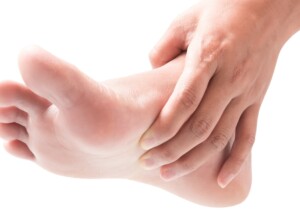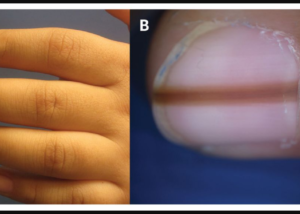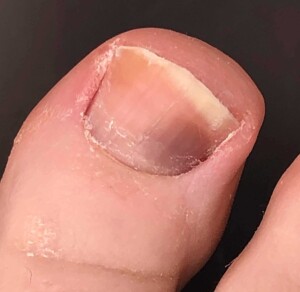
JUNE 11
Here are serial images of a big toenail subungual hematoma showing how the old blood and bruise heal over an eight month period.
In the June 11 image above, a subungual hematoma (mass of blood under the nail) of the big toe is very evident.
It was noticed about a week after the individual had done a continuous jog downhill on a gravel service road that cut through foothills at declines between 10 and 15 percent.
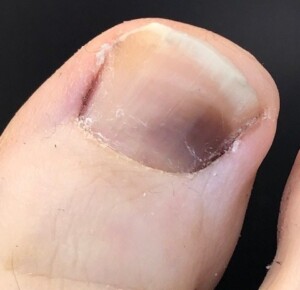
JUNE 27.
If you look closely at the June 27 image above, you can see that the hematoma has very slightly moved upward (as the nail grows out).

JULY 11
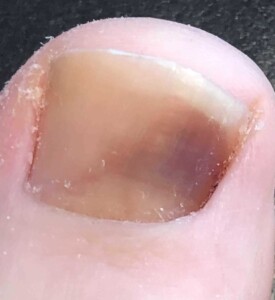
JULY 26
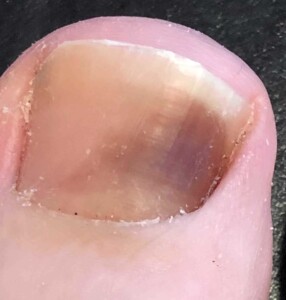
AUGUST 3
Come August, it’s very clear that the subungual hematoma has been “pushed” upward by nail growth.
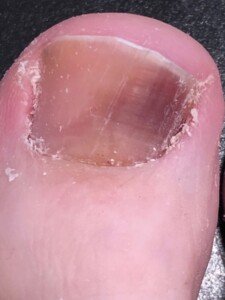
AUGUST 21
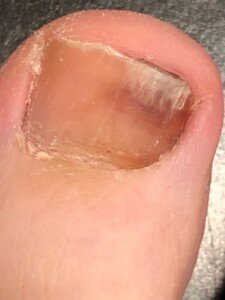
SEPT 21
In the September 21 image above, you’ll note dark material beneath the top of the nail.
This was always there — it’s the subungual hematoma. But it’s visible this way because the nail has been trimmed.
Unlike melanoma, the hematoma can be easily and gently scooped away, like a crumbly scab — which is essentially what the hematoma is.
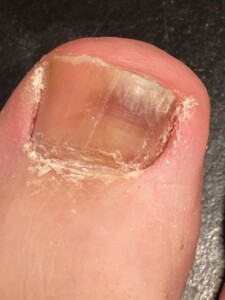
SEPT 30
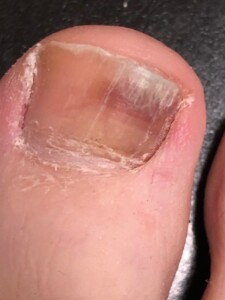
OCT 15
In the October 15 image above, you can see at the bottom of the nail the beginning of a new nail pushing out the old.
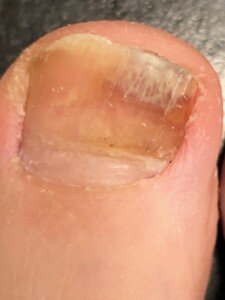
NOV 25
In the November 25 image above, the new nail is obvious — the bottom portion of the nail, spanning its width.
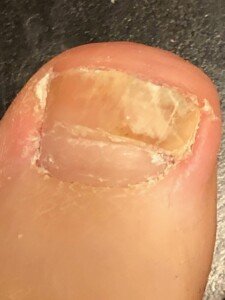
JAN 7
The January 7 image above shows the new toenail taking up almost half the nail height. The top half shows how the nail has become loosened.
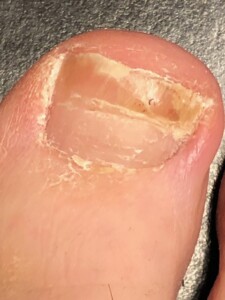
JAN 24
The January 24 image shows more growth of the fresh new toenail, which will eventually completely replace what’s left of the old nail that sustained damage from the bleeding.
The subungual hematoma is clearly on its way out.
Prevention of a Subungual Hematoma
First, wear properly fitting shoes that provide adequate space for your toes, reducing the risk of trauma from tight or ill-fitting footwear.
This includes a proper fit if you were to jog downhill.
For activities that involve heavy impact or risk of foot injury, such as running or sports, choose protective footwear designed to absorb shock and provide extra cushioning.
Be mindful of your environment to avoid stubbing your toes or dropping heavy objects on them.
For example, don’t wear sandals on hikes and don’t wear sandals to the gym.

